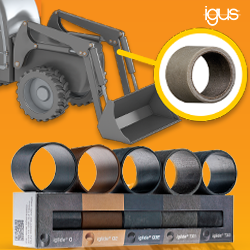Embracing automation and robots in industry
The future lies in the innovation of industry; efficiency and automation are the key buzzwords of 2020 as Covid-19 pressure drives businesses to seek new and unique ways to achieve more with less, and counter those slimming margins. Within warehousing, logistics and picking and packing for e-commerce for example, there’s been a rapid uptake over recent times of automated processes and the added support of robotics. Autonomous vehicles and effective autonomous transport solutions for instance can contribute a significant improvement in throughput efficiency and error reduction for e-fulfilment applications. However the UK has been historically slow with adoption as it faces reservations, Dr. Paul Rivers, Managing Director, Guidance Automation, explores both the challenges and opportunities facing industries.
Robotics in the UK
Ranking 22nd in the world, the UK has a robot density figure of 91 which is behind the global average of 99 according to the International Federation of Robotics. It’s no surprise considering how automation can be expensive to begin with. Initial vehicle tryout can be costly to integrate into the facility, and often prevents businesses from testing out automation within their specific industry settings.
The process is entirely different from traditional purchases, for instance when a business buys a forklift truck and a supplier ships it, it can then be tested by someone in the warehouse. However with an autonomous forklift truck, maps of the facility have to be created for navigation purposes, route layouts provided for allowed travel areas, and these are just some of the costs of the initial integration. The UK has definitely been holding back, waiting to first see both success stories and working examples of the benefits of automation in order to take the leap. However with the pressures of Covid-19 upon the nation, now is that time to realise the value that can be leveraged from smart automation and robotics.
Manufacturing and logistics pave the way
Covid-19 has shown the UK that it must be more self-sufficient, there must be less reliance on imports and over the course of the ongoing pandemic this has been made abundantly clear. Increased demand, new social distancing measures and a reduced workforce have been just some of the challenges faced so far, and as the situation continues and the likelihood of additional waves in the future remains high, businesses must future-proof today.
Interest in automation within the manufacturing sector has risen in recent months as businesses realise this, and it’s the perfect way to ensure safety regulations can be maintained. In the logistics market alone, there has been huge growth and demand fuelled by the pandemic that requires innovative solutions to enable organisations to meet consumer expectations. So how can this be achieved exactly?
Robots alongside humans
Automation has already helped to fill workforce gaps and shortages during the pandemic, following furlough procedures and increased sick leave. The two go hand in hand however, humans are still required for certain tasks but robots can free up staff to focus on those jobs that require advanced decision making, while taking on repetitive and monotonous functions. Furthermore, as Artificial Intelligence (AI) continues to develop, robotics can take on more superior roles however this does not mean the eradication of the human role in the industry. As the world changes, whatever the revolution, the workforce changes too. For example, candlemakers would have adapted to create light bulbs and components to provide electricity to houses. Where are all of the people that used to work in the huge newspaper industry? Jobs change and new roles are created in new industries as times evolve.
Crucially, humans are integral to the initial adoption of robotic processes, they must drive the direction that it takes to ensure maximum operational efficiency is leveraged. Partial adoptions of automation are perfect for this, compared to total transformations, and advocates humans working alongside robots.
It works by introducing a small number of vehicles or robotic elements to work alongside existing systems, and they are aimed at achieving fast success. For instance, in situations where humans would have previously been moving heavy boxes, these types of processes can be easily and quickly taken over by automation through the push of a button to call or send vehicles. Autonomous vehicles can be used to simply tow or carry items to and from designated areas with the human counterpart remaining stationary and completing the more complex parts of the processes to improve time efficiency.
Particularly in these types of industries, there are many end process tasks that require ‘complex’ steps, such as assessing the contents of a box and the fragility of it. You could consider humans to be expensive machines, and their time is wasted driving or moving objects in such menial tasks when there are more challenging jobs to be focused on.
Staff are also best placed to see places where automation could add further optimisation, after all they know the business best and after embracing robotic counterparts, will be capable of driving integration. In short, it encourages a collaboration that makes the whole process more efficient and as such, spirals into a great investment.
Automation is the future here and now
Data analysis, AI, automation and robots alongside humans within industries across the globe is the future of the world, there’s no doubt about that. It’s up to businesses today to realise this and ensure they implement effective solutions to remain competitively ahead of the curve, whilst leveraging operational efficiencies that can widen those margins today. Automation allows for social distancing, reduced workforces and encourages the compliance of safety regulations to promote the road to recovery for businesses and the economy. It’s time for managers to realise the benefits and opportunities available to them today by engaging with innovative companies that can assess the best ways in which to implement automation and provide the steps and process simply and cost-effectively.
Comments (0)
This post does not have any comments. Be the first to leave a comment below.
Featured Product

